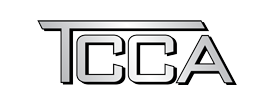Business owners often see their growth stagnate after successfully reaching their current level. The owner might have taken their business to $5 million a year but can’t envision the next level of growth and the transformation necessary with size. A limiting belief is holding them back.
Limiting Internal Doctrine Syndrome (LIDS) presents itself at different phases of a construction company’s growth. I see most companies suffer from three levels of LIDS, usually around $5M, $15M, and $30M in annual earnings. Each level of LIDS presents distinct challenges because the owner can’t envision what is necessary to achieve the next level of success. Does this sound like you?
A Fractional CFO Can Help You Move Forward
The company has hit the ceiling when an owner isn’t sure what to do next. Owners start looking backward at what worked in the past, not what is needed in the future. An owner’s company reaches a revenue threshold due to LIDS because what you, the owner, are doing now will not get you where you want to go, which creates stagnation of growth, AKA lost growth, lost profitability, and lost employees!
Anytime someone cannot look forward, they limit new possibilities and constrain their development level. A past action was fabulous because it took you to the current level of success, but it won’t be the same action that takes you to the next level. Your employees are waiting for you to take action!
A controller might have helped take the company to $5 million, but a CFO is necessary to reach $10 million. Specific operational approaches might have been perfect for moving projects efficiently through the company up to its current size. It’s now that you have to make changes to accommodate the volumes coming with future growth. When you only look backward to what fostered your current success, the controller remains in place, and new operational models remain untested.
Hindsight bias is the most significant cause of LIDS. Secondarily, your inner circle could be creating limiting beliefs if they haven’t been where you want to go. This is where a fractional c-suite professional like a Fractional CFO can help get you through these biases.
Use the Entrepreneurial Mindset to Attain the Next Threshold
Others have reached that next threshold by adjusting and learning what to do next. They exchanged nostalgia for vision and adopted the models needed for the next level of growth. Often someone helped them see things differently, and they agreed to let go of LIDS and move forward.
Many owners look to the past because people’s subconscious runs 90% in the past. And because entrepreneurs are instinctive thinkers and those thoughts come from our subconscious, their minds are looking to the past for answers for the future. The subconscious doesn’t know the new systems needed or who to hire while growing to the next earnings threshold because it hasn’t experienced those challenges yet. The changes necessary could be simple, but it doesn’t matter if they are simple or challenging. The difficulty level is irrelevant if the past doesn’t hold any of the answers you are looking for in the future.
To be ready for the next level in your company, you need to be ready to learn new methodologies. Whether you find those yourself or seek out the guidance of others, the way you’ve always done things is about to change.
Regardless of how your mindset changes to embrace new strategies, models, and practices, you will now utilize methods that helped other similar businesses move forward. It could be a mix of methodologies pulled together to fit your company, but you have to be willing to jump out of the plane.
Decisive Action on Financial Opportunities
Congratulations! You decided to stop limiting yourself by looking backward and jumped out of the plane. It might be time to tell you that you don’t have a parachute, just a ball of string to construct the parachute as you go.
Building the parachute requires looking at the ball of string, unlike how you’ve ever looked at a ball of string previously. You will make the parachute while experimenting with your ball of string.
If that sounds scary, it’s not. It’s just uncertainty and the uncomfortable act of leaving the past behind you. Remember, you didn’t have a parachute when you went into business for yourself. Probing and learning new ideas create successful companies as long as the owner is willing to let go of LIDS.
An example might be the need to hire new people if the company is expanding at the end of the year. Many owners will tell themselves that no one responds at the end of the year and not even place the employment ad despite needing people immediately. What’s the result? The company can’t grow until January, and you might have to push customers out for several months, building a backlog with extensive costs to alleviate.
Still, people are out looking for jobs throughout the year, including in November and December. LIDS kept an owner from placing a very inexpensive ad, especially when compared to the lost opportunities. They weren’t willing to make their parachute because of a LID and this caused stagnation of growth for both the company and the culture of the company.
When You Need a Strategic Financial Partner
As owners reach the next growth milestones, most forget the reason they went into business in the first place. You became an entrepreneur to work yourself out of a job.
Entrepreneurs are susceptible to the e-myth, which is that they are necessary for the business to survive. Many owners tell themselves that without them, everything will fall apart, growth might stop, or even worse, the company might go under. The limiting belief is that others aren’t going to do it exactly like the owner and so the owner feels that the employee’s way is wrong. In reality, if an employee does something 80% as well as the owner, the company will perform just fine. The hurdle for the owner then is to accept 80% of their own potential as good enough from their team.
While building a business, owners’ self-identities started including the company as an essential component, and they defined themselves with it. Surely your company can’t be successful without you, right?
Wrong. Owners become the roadblock to growth when size overtakes their capacities and knowledge. The time then comes to step back, and bring in experts to help the owner to move the company forward.
Titles like COO, CFO, and even CEO are necessary. The controller can’t manage the finances like an actual CFO when the company gets past a certain size. There is a need for a strategic partner to accommodate more and more projects that demand a COO when a production manager doesn’t have the skills.
Delegating high-level tasks to c-suite experts allows the owner to step away, attend events, check in occasionally, spend time with family, and enjoy their success. That’s the true goal of every entrepreneur, and LIDS prevents them from achieving it.
Outsource Financial Advice to Move beyond LIDS
No business owner runs their business alone. You have options to guide you through growth and help you move past your LIDS; use them.
You can seek advice from other executives, hire the right people for management, or retain a partner with industry-specific experience and results. When used together, these valuable resources will help you find the solution that builds your parachute.
Most importantly, be willing to acknowledge that past business practices no longer apply; the company has outgrown them. Then accept the need to learn, open your mind to new possibilities, and continue to probe and learn.
You became an entrepreneur to work yourself out of a job, and that is the very definition of success. Don’t let LIDS prevent it.
If you feel stuck with LIDS, please feel free to reach out to me at aaronm@daaxit.com for a complimentary consultation.









